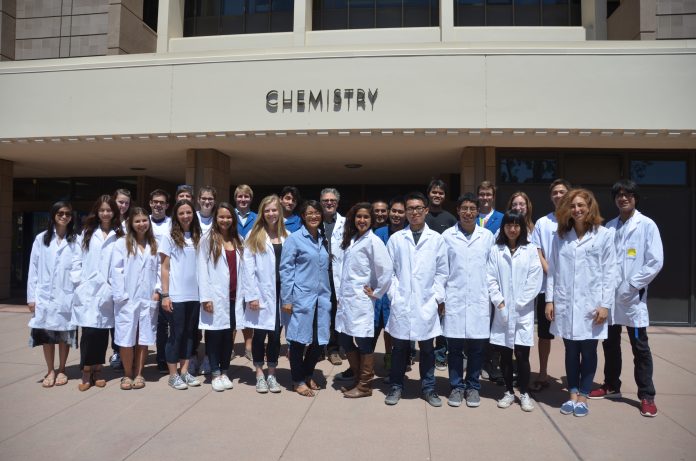Eric Kwon
Science & Technology Editor
Elementary level science experiments often bear clear-cut, step-by-step processes that offer little room for personal flair or deeper levels of understanding — the exact type of norm in scientific education that SciTrek aims to revolutionize. With volunteers and educators situated in classrooms from second grade all the way to high school, the organization educates students on the scientific process in an active, educational setting with an immersive, curriculum-based program.
With a $2 million grant from the Department of Defense (DoD), SciTrek was and is able to continue its mission in confidence through engaging in more diverse curriculums and expanding opportunities for students and educators alike.
It was not always this way though. SciTrek started with just two people: Darby Feldwinn, a faculty member in the chemistry department and the education department at UC Santa Barbara, and Norbert Reich, a faculty member in the chemistry department as well. In an interview with The Bottom Line, co-founder Feldwinn discusses her experience navigating the program and also about the recent, large DoD grant given to SciTrek.
As educators on a college campus, they noticed that college students came not knowing how to design scientific experiments. They believed it was in part due to a failure of the school system to provide opportunities to design these experiments.
“There’s just one teacher and 30 students,” Feldwinn says. “That’s really hard to allow them to go in different directions.” Feldwinn wanted students, even at the elementary level, to be able to envision experiments beyond knowing its surface contents. It was important to know the why and the how behind them.
Ultimately, students and teachers are able to benefit from these efforts in a systematic way. “If we can come in there and help them learn these processes with their students and how to lead these open-ended, inquiry activities, then that will not only help their students, but it’ll help future students because then they can continue with the process with those students.”
This is a glimpse of how SciTrek operates differently from other scientific outreach programs. Fusing education and inquiry, an initial phenomenon is presented. Like a typical experiment, different variables that are able to be adjusted are presented, in which the phenomenon would change accordingly. With a class of around 30, the data from different variables would be able to be charted, and thus the trends of the entire class would be able to be examined.
With the DoD grant, it would allow SciTrek to do certain things. First, it would allow the homegrown project to expand to three other schools, though COVID-19 and the subsequent closing of schools has proved to be an obstacle. The grant would also allow the development of bio-modules predominantly for the high school and middle school level, though the elementary schools will be exposed to this as well. This would mean more experiments. Lastly, it would create a fund aimed for the teachers in these facilitated classrooms. For instance, if a teacher attended a SciTrek orientation, they would be able to be compensated accordingly.
In contrast to Reich, who supports the high schoolers in the program, Feldwinn oversees the elementary school kids and middle schoolers. In the beginning, there was no deliberacy in expanding to other grades, but they slowly expanded as teachers from other grades became interested in becoming involved with the program. “It started getting a little bit more organized as we started developing up.”
With these types of program experiences, students are able to have more programs that meaningfully immerse them in sciences, which may subsequently be able to transform a simple spark of interest into a career in the field. Unlike showy, one-time science days, SciTrek has a focus on curriculum education, meaning hours-long modules with reading and writing.
A major reason why SciTrek is so successful is because of its array of ways that help its constituents. It helps students obviously, but it also has led to the creation of a special joint master program with Education + a science degree (chemistry, biology, etc.). SciTrek’s volunteers are also able to gain tangible, meaningful experience under their belt, leaving them more prepared as educators in the future.
SciTrek has come a long way from its grassroots origins, and the organization is constantly finding new ways to expand and enrich the people it comes into contact with. The DoD grant allowed SciTrek to branch out more effectively, and students will be able to feel the impacts of it, engage in science better, and perhaps even inspire a path towards science in the future. It will be interesting to see where SciTrek will be led next and what the types of educational trends it may forge for the future.











